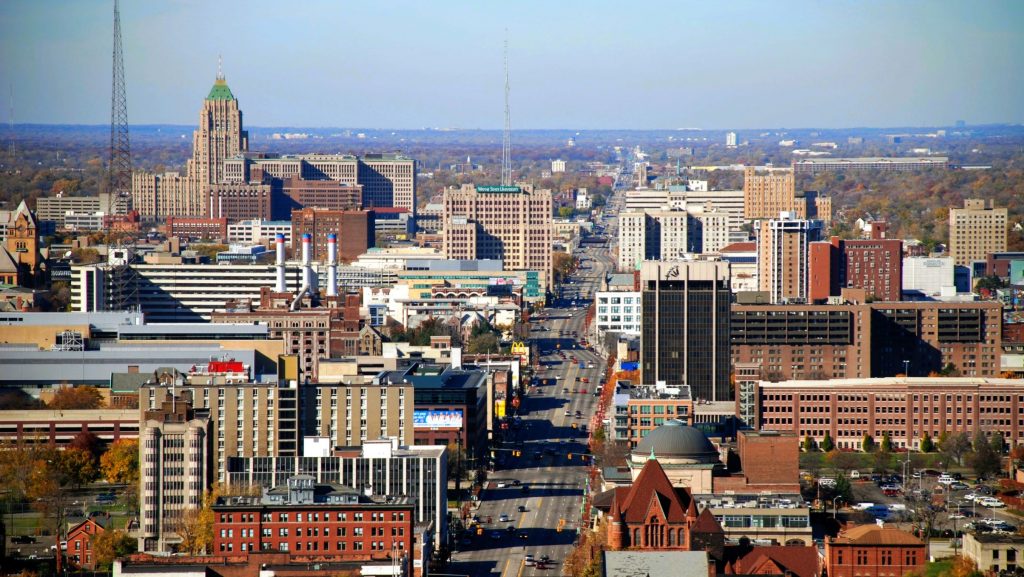Federal money coming to three Michigan cities for safer, greener roads
Elinor Epperson July 1, 2024The funding will help Detroit continue to expand the Joe Louis Greenway and Iron Belle Trail, projects that connect several parts of the city via trails that are separated from roads.

An aerial view of Midtown Detroit.
Three Michigan cities have been awarded millions of federal dollars to make roads safer and reduce greenhouse gas emissions.
Detroit, Kalamazoo, and Menominee will receive a combined $67 million from the U.S. Department of Transportation. The funds come from a program meant to support infrastructure for greener transportation and historically marginalized communities.
Detroit will continue expanding the Joe Louis Greenway and Iron Belle Trail, projects that connect several parts of the city via trails that are separated from roads.
Menominee will overhaul the city’s freight terminal, so that goods can move via rail and water. That will reduce greenhouse gas emissions from heavy-duty trucks, a press release from the Michigan Infrastructure Office said.
Kalamazoo’s $25 million grant will go to its Streets for All initiative, a plan to completely revamp several high-speed, one-way streets in downtown Kalamazoo.
Dennis Randolph is Kalamazoo’s traffic engineer. He said safety is one of many benefits of the project. Reducing speed limits, redirecting traffic to two-ways and narrowing the road will make it safer to ride a bike or walk in that area.
“An overriding part of this is sustainability and resilience,” Randolph said. Improving safety for pedestrians and bicyclists encourages more people to walk or bike instead of driving. It also reduces greenhouse gas emissions from cars that are speeding or weaving.
“We’re going to be changing the nature of our street system,” said Randolph.
In 1965, Michigan’s Department of Transportation converted many major roads in cities across the state to be wider, faster and one-way to speed up traffic flow. This included Kalamazoo, whose downtown area is a maze of wide roads where motorists regularly speed.
“Right now we have some places where [streets are] seven lanes wide,” Randolph said. “And they only need two lanes.”
The changes will address a variety of long-known problems, including historical inequalities, Randolph said. Kalamazoo’s roads still reflect redlining from the 1920s and 1930s and act as barriers to disadvantaged communities living in the city.
“They reinforced that red line along with the railroad,” he said. Wide, fast streets inhibit pedestrian connections. Narrower streets are easier and safer to cross, making neighborhoods more walkable.
The city also plans to extend sidewalks into neighborhoods that currently don’t have them.
The initiative began construction earlier this month with Michikal Street, although it will stay one way. The city will create a paved path separate from the road for non-motorized transportation. Other federal funds will support redesigning a nearby creek to manage stormwater and reduce potential flooding.
On other roads, pavement formerly used for cars will be converted to bike lanes, Randolph said. He hopes the changes will encourage more pedestrian and bike traffic, and reduce motor vehicle accidents.
“We’re really reconnecting everything,” he said.
